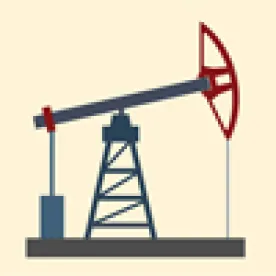On November 15, 2016, U.S. Secretary of the Interior Sally Jewell announced the final Methane and Waste Prevention Rule (the Rule), which is a Bureau of Land Management (BLM) rule that will reduce emissions of natural gas, which primarily consists of methane, into the atmosphere from oil and gas operations on public and Indian lands. The Rule was published in the Federal Register on November 18, 2016. 81 Fed. Reg. 83008 (Nov. 18, 2016). The Rule notes that the United States is the largest natural gas producer in the world, but there was enough natural gas lost due to venting, flaring, and leaks between 2009 and 2015 to serve more than six million households for a year. Id. at 83009. In addition, the amount of wasted natural gas means that states, tribes, and federal taxpayers lose millions of dollars annually in royalty revenue. Id.
The Rule provides for phasing in requirements over time for oil and gas producers to use currently available technologies and processes to reduce flaring at oil wells on public and tribal lands. See id. at 83010-83011. Operators would also be required to periodically inspect their operations for leaks and replace outdated equipment that vents large quantities of natural gas into the air. Id. at 83011. The Rule also requires operators to limit venting from storage tanks and to use best practices to limit emission losses during transfer of liquids from wells. Id. at 83011-83012. Finally, the Rule clarifies when operators will owe royalties on flared gas and restores the government's Congressionally-authorized flexibilities to set royalty rates at or above 12.5% of the value of the production. Id. at 83013.
The Rule contributes to the Obama Administration's goal to cut methane emissions from the oil and gas sector by 40-45% from 2012 levels by 2025. Methane emissions are projected to be reduced by as much as 35% below 2014 methane emissions estimates under the Rule. Id. at 83014.
The Rule was proposed in the Federal Register on February 8, 2016, and BLM extended the public comment period to April 22, 2016. The final Rule is effective on January 17, 2017. Id. at 83008.
The Rule will likely be subject to the Congressional Review Act (CRA), which allows Congress to review new major rules by federal agencies. 5 U.S.C. § 801 et seq. (1996). See KEAG Bulletin No. 2016‑16 dated November 16, 2016, for a more in depth discussion of the CRA. The CRA is a complex statute involving various timeframes, procedures, and alternatives, but basically it allows Congress time to review the rule and adopt a joint resolution of disapproval, which would be submitted to the President for consideration. This procedure could provide President-elect Trump the opportunity to join with Congress and disapprove the Rule, without the opportunity for judicial review. Id.




 />i
/>i
